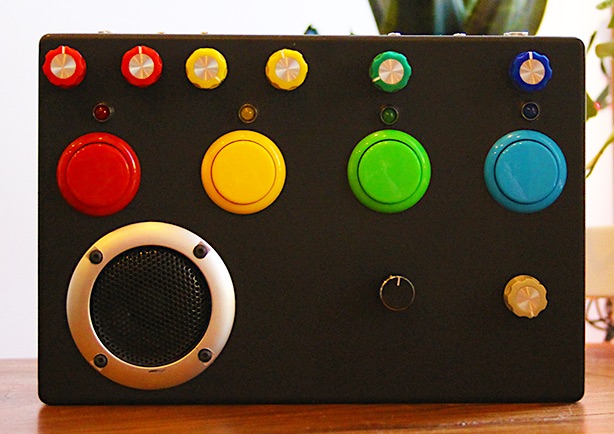A Vocal Effects Unit For Kids
This voice changer and effects unit was built by Kyle Reiff for his 4 year-old niece.
 The inspiration to dive headfirst into a new project can come in many forms: discovering new timbres on a great record and trying to reverse engineer the magic, getting caught up in shiny new gear at NAMM and trying to build the future… or maybe hearing your 4 year-old niece belt out a pitchy version of “Let It Go” and gunning for that #1 uncle mug by building a vocal effect unit for kids.
The inspiration to dive headfirst into a new project can come in many forms: discovering new timbres on a great record and trying to reverse engineer the magic, getting caught up in shiny new gear at NAMM and trying to build the future… or maybe hearing your 4 year-old niece belt out a pitchy version of “Let It Go” and gunning for that #1 uncle mug by building a vocal effect unit for kids.This story is going to be about that last one. Building anything for a child is a tricky proposition. Fisher-Price famously went through dozens of revisions of their children’s tape recorder from 1981-1997 before feeling confident enough to put the term “Kid-Tough” on the box. Apparently, the addition of an elastomeric bumper surrounding the housing separated the original design from its “kid-tough” counterpart. I’m not an engineer by trade – so elastomeric bumpers are a little outside of my wheelhouse… but with Bela, a sturdy hammond enclosure, and some arcade buttons I felt confident I could still make something fun!
Beyond durability, I had five additional “must-haves” in mind for the effect unit:
- Must be portable & stand-alone – Battery powered with an on-board speaker.
- Must have a range of interconnectivity - plug in all manner of audio stuff and it just works whether it’s a phone, computer, guitar, microphone, whatever.
- Must have a dry signal passthrough input – Karaoke anyone?
- Must have flexible output options – onboard speaker, sure, but also an output jack to use with an amp, PA, or home stereo.
- Must be able to “grow” with her – fun for a kid, but still fun for a teen, and possibly a jumping-off point for coding or Pure Data dabbling at the right age.
Most of my anxieties about this project were rooted in the hardware aspect of things, so naturally I kicked things off by assembling the code for the vocal effects. I decided to use Pure Data here just because I’m more comfortable with PD than C++. I also felt that the visual aspect of PD would be a more accessible jumping off point for someone (i.e. my niece) trying to design their own effects.
Kyle Reiff
: Maker and instrument builder
Connect with Kyle Reiff